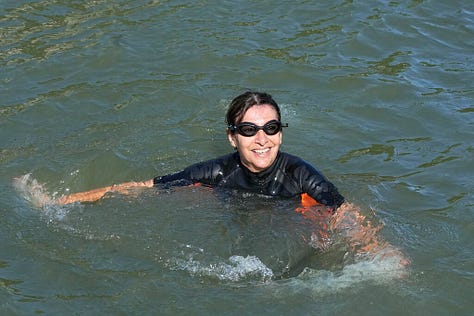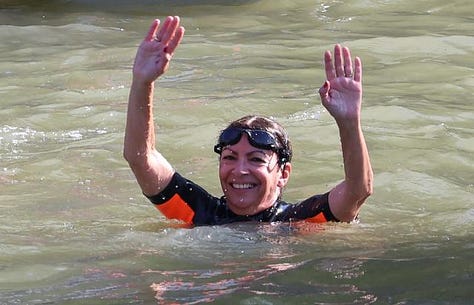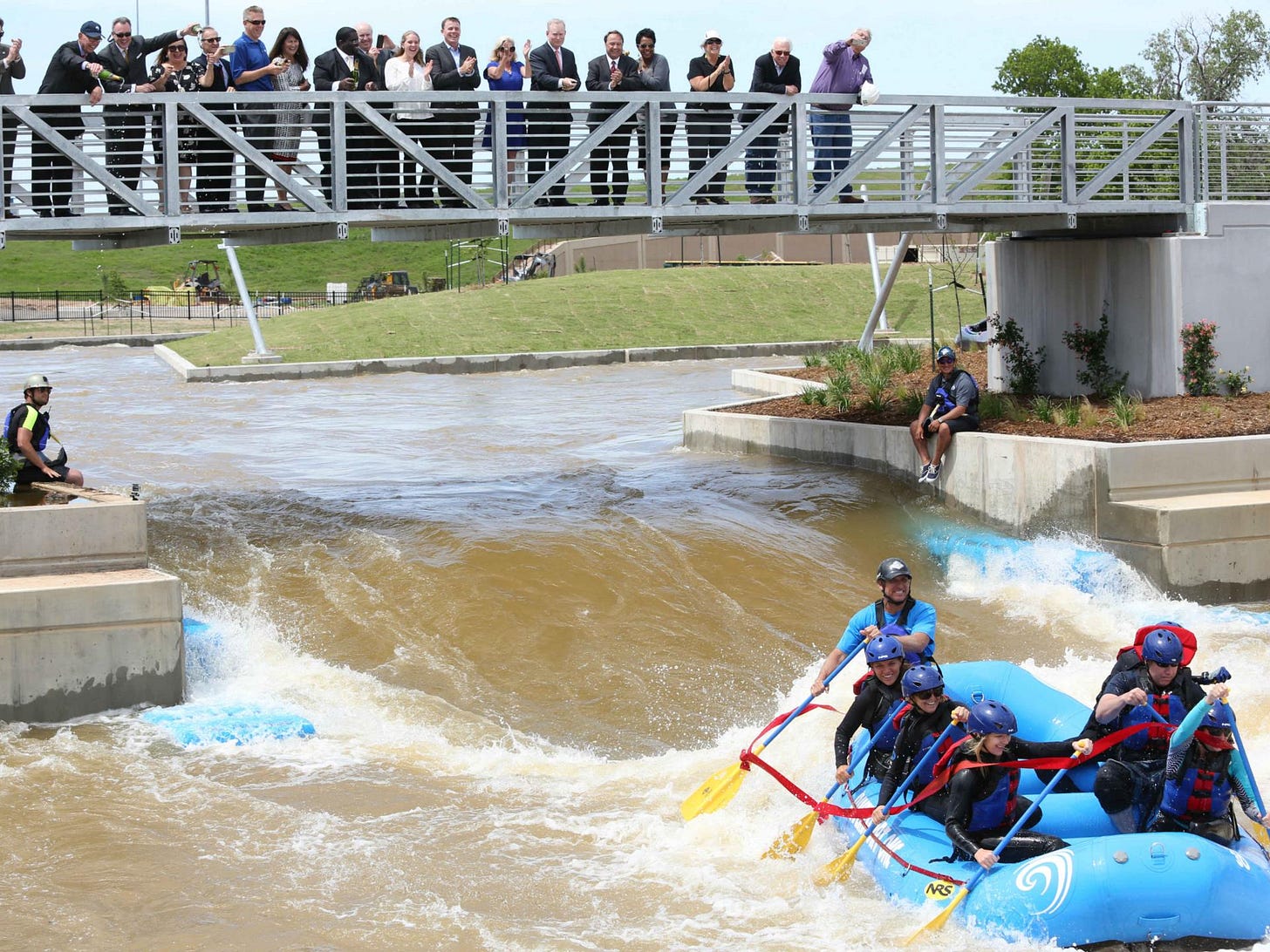Envying the Swimmable Seine
We need our rivers to be cleaner, but should swimming be the goal?



It was an iconic and triumphant moment: The mayor of Paris, Anne Hidalgo, recently swam in the Seine just days before the river’s starring role in the summer Olympics. The clean up of the Seine has taken years and $1.5 billion, but the Olympic events are merely a capstone on an effort that will result in legalized swimming in the Seine after the games, an improved environment for wildlife, 26 swimming pools along the Seine set to open next year, and a 10-million gallon retaining system to contain some of the sewage that would otherwise get pushed into the river. The swimmable Seine is getting a ton of attention and will undoubtedly result in a lot of other cities asking: Why can’t we swim in our river, too?
Paris is not the first major global city to have achieved this goal: Munich’s Isar River is frequently held up as an example of what is possible when you invest in cleaning up a river. Copenhagen, Vienna, and Zurich, all have swimmable rivers at least in part. Berlin and Amsterdam are trying to make their waterways swimmable.
In the U.S., ever since the Clean Water Act of 1972, we’ve had the goal of making all the country’s waterways safe for fishing, swimming and drinking — but more than 50 years later, few urban rivers are truly swimmable. Perhaps the most impressive is Oklahoma City, where the city has focused on creating a riversport complex. If you thought it was super random that OKC was hosting part of the 2028 Los Angeles Olympics, now you know why: it has a river where people can canoe slalom.
Cities like Boston allow people to swim in the river once a year at a big event. But in a similar effort this summer, Washington, D.C. tried to host a swim day in the Anacostia River that had to be postponed three times because of E. coli levels, giving us all a reality check: most urban rivers are also urban sewers.
Many cities in Europe and the older parts of the U.S. built combined sewer systems in the 1800s. These sewer systems gather both rainwater and sewage into the same pipes running under the city. When there’s a heavy rainstorm, the rainwater overwhelms the system, pushing sewage into rivers. In Paris, officials are praying that it won’t rain much before or during the games — because if it does, the fecal matter levels will soar and long-planned events will have to be held in a Plan B location outside the city.
While high levels of fecal matter are a major problem for cities that want to clean up their rivers, there are also other kinds of pollution. In the U.S. where regulation is lax, there’s toxic dumping and accidents that happen pretty regularly in many watersheds. Just last year, the city of Philadelphia told residents to drink bottled water after a chemical spill threatened the city’s water supply. When you see that the penalty for this incident was a measly $2.7 million doled out to nearby residents the form of $25 gift cards, you realize how easy it is to keep trashing the river. It’s been a few decades since the notorious river fires of the late 1960s, but that legacy of toxic dumping is never too far behind — the Cuyahoga River caught fire again in 2020 when a tanker spilled its flaming oil on the river.
While we definitely need to continue to clean our urban rivers and make them more accessible, it feels to me that making them swimmable is more Instagram #goals than policy priority.
As Paris’s example shows, making an urban river clean enough to swim in does not come cheap. How much green stormwater mitigation could you buy with $1.5 billion to prevent water from flowing into the river in the first place and prevent all the other problems that come to a city when there’s an extraordinary flood?
How could $1.5 billion improve the safety, quality and cost of drinking water in a city? How many public pools could you maintain, build, and staff for $1.5 billion? What kinds of non-swimming recreation or waterfront public space could you build with $1.5 billion? You get my point — we have a lot of ways of achieving similarly important environmental and social equity goals beyond swimmable rivers but they don’t have the cool factor.







